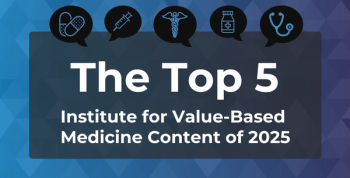
Conference Coverage
Latest Content

Top 5 Most-Read Mental Health Content of 2025

In-Home Step Training Did Not Improve Proprioception, Muscle Performance in MS

Top 5 Most-Read Allergy Content of 2025

Baricitinib Shows Real-World Effectiveness in Severe Alopecia Areata Hair Loss

Real-World Data Highlight Favorable Responses to Liso-Cel for R/R CLL

Shorts










Podcasts
Center on Health Equity & Access
Continuing Medical Education
All News

Chronic inducible cold urticaria is rare, but a new study suggests it can have significant impacts on patients’ daily lives.

Patients with generalized myasthenia gravis face significant barriers to diagnosis, creating the need for improved patient–health care interactions.

From oncology to cardiology, Institute for Value-Based Medicine® conversations highlighted the ways value-based care is reshaping access, equity, and outcomes.

Our top 5 heart failure content of 2025 include FDA approvals, GDMT optimization, risk markers like LBBB and SDOH, and value-based care models improving outcomes in heart failure.

The final AJMC Stakeholder Interchange of 2025 took place in Seattle, Washington.

Chronic kidney disease complicates cancer treatment, leading to reduced chemotherapy use. Personalized approaches are essential for optimal patient outcomes.

Scott Soefje, PharmD, MBA, BCOP, of Mayo Clinic, discusses how payer-provider collaboration and pharmacist-led management can help improve oncology care.

Readers of PHEO this year found value in research, conference coverage, and insights that touched on health outcomes and care quality.

Obstructive sleep apnea may increase Parkinson disease risk, but early CPAP treatment could significantly reduce this risk.

Our conference coverage featured updates on clinical trials testing new treatments for NSCLC, bladder cancer, and breast cancer.



















































